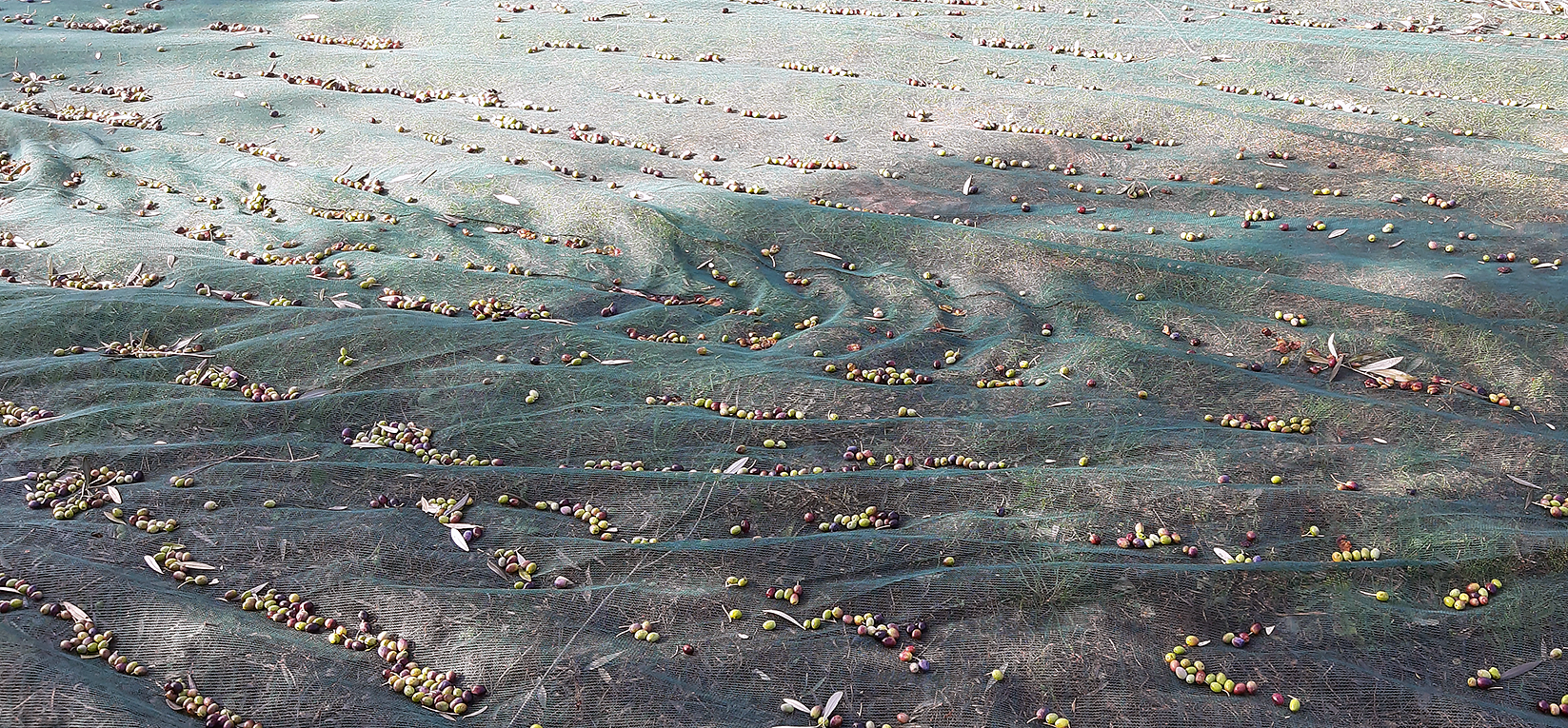How olives become oil…
Harvesting and pressing of olives
The most suitable time for pick-up of the olives is when the veraison (change of the color of the fruit from green to purple and finally back) is at its 50/60%. In fact, at this time there is the highest quantitative concentration of oil and phenolic substances responsible for the organoleptic and nutritional oil qualities.
The period of olive harvesting, in Italy, goes from mid-October to the end of December and it is influenced by many factors such as: day and night temperature, rainfall, altitude, morphology of the land, exposure to the sun, age of the olive trees.

The olives are collected through a mechanical process and that the harvester, with a collection yield of about 3 working days per hectare of olive trees. According to the strict procedures for the classification of the oil as D.O.P (see procedure for obtaining and maintaining the label D.O.P.), the milling of the olives in the oil mills must be started within 24 hours from the collection. An average of 30 quintals of olives per day are harvested and delivered to the mill at the end of the same day; from that moment the milling process starts. This process is divided into several stages:
CRUSHING AND JUICING
Storage and conservation of the oil
- Once the complex, entirely mechanical pressing procedure of the extra virgin D.O.P olive oil has been completed, it is essential to keep its chemical and organoleptic characteristics stable; to this end, it is necessary to keep the three main parameters responsible for deterioration (temperature, light and oxygen) under strict control. Therefore, the oil is stored in special stainless-steel containers where NITROGEN gas (atmospheric, noble and inert) is introduces. Thanks to nitrogen, oxygen is broken down and this permits the development of vacuum process that maintains all the organoleptic and qualitative characteristics of the product for at least 18 months. The containers are stored in special rooms (OLEARIE) where a controlled temperature of about 18 degrees centigrade is maintained throughout the year and where no light comes in.
- The extra virgin olive oil D.O.P. is bottled.

Once purchased, extra virgin olive oil should be stored in cold and dry places, in environments with not excessive temperature variations, protected from direct light, air and heat. The cold does not cause alterations in the structure of the product and in its shelf life.
OLIVE HARVESTING
OLIVE HARVESTING
START OF MOLITURE, DEFOLIATION
START OF MOLITURE, DEFOLIATION
START OF MOLITURE, DEFOLIATION
START OF MOLITURE, DEFOLIATION
SQUEEZING AND PRESSING
STORAGE AND CONSERVATION

